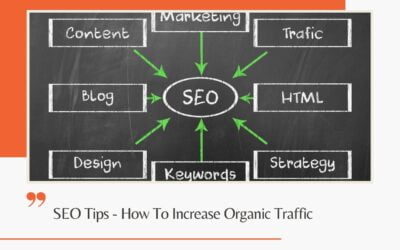If you are a webmaster of a website, you must be using some web analytics software like Google Analytics, Statcounter, Awstats etc. But what web analytics are? Web analytics is the comparison of data collected from the internet (via a website or any other sources) and then providing a meaningful conclusion out of it. For example, assume you have a website which sells toys across the UK. If you use any of the analytics software, you can tell which region generated more revenue. This can be very useful as you can plan to expand your business, keeping in mind performance from data collected from your website. These data is beneficial if you want to grow your business, for example. Looking at the previous example, if you’re going to open retail stores, the region where your sells are high can be your first target.
Based on our agency experience, web analytics helps a great deal with branding. You can identify the percentage of visits from brand queries, informational keywords or transactional keywords. If this number is high (or at least increasing), you can be assured that your branding efforts are working. If not, you can concentrate more on your branding endeavours.
Whether you are running an email campaign or banner ads, web analytics can help you to get a complete set of data. How many times the total number of email you sent has been clicked, how many of these email has been forwarded to others, which is the most common type of web browser which your customers are using. How effective are your landing pages and other subsequent pages which leads to final conversion, how many times your banner was seen on a webpage (impressions). Using analytics, you can track lots of meaningful data.
According to a survey conducted, 72% of websites are either using (or planning to use) web analytics software. Some other useful statistics out of this survey are as follows:
50% of companies said that they monitor their web analytics reports and consequently shape their campaigns. The data are appropriately evaluated with meaningful analysis to improve further performance. For example, the total number of visits from affiliate sites is very high, but the conversion is low. In such a situation, you should optimise the landing pages. Include split testing, and the conversion rate will surely improve.
74% of companies use analytics software to monitor their email campaigns. Tracking your email marketing performance can help you improve your open rate, conversion and increase sales.
82% of companies use web analytics to test the effectiveness of any changes which they have made on their website. A more conventional approach is to go for A-B split testing and then evaluate both versions separately to know which one works better.
80% of companies believe that the use of web analytics software has created a positive effect on their conversion rates.
Companies using analytics software increase their online conversion from 2% to 7%. 74% of companies admitted that regular use of web analytics has helped them to improve their online conversion by 3%.
70% of companies use web analytics to monitor their customer behaviour. This is one of the best use of web analytics as you can target a more specific type of customers that are ready to catch what you are offering. For example, if you sell online toys, probably young parents in the age group of 25-35 will be more prone to shop on your website.
Online shopping is generally favoured by the young generation in the age group of 18 to 35. But still having the exact data can help you design a better product. This can be even more useful to define the perfect interaction funnel between the customer and the company. Knowing the exact demographic can help you design campaigns for a specific segment of your audience.
A vast percentage of companies prefer using free tools like Google Analytics, as they feel that the data provided are sufficient to drive the business in a positive direction.
In the US and UK, the percentage of companies using free web analytics tools is from 53% to 87%.
Internationally when a survey was done about the use of free or paid web analytics software, the data differed between top or big companies and medium companies. The first graph below shows the data for small companies about the use of free or paid software, whereas the second graph shows data collected from top companies:
You can clearly see that larger companies prefer using paid tools. According to our agency experience, if you do not have a large site like the Amazon.com, free tools like Google Analytics are sufficient to help your cause.
All analytics tools work with one of the following two methods:
Logfile analysis – The web servers store the transaction data in log files. The analytics tool extracts the data from these log files and provides various useful information.
Page tagging – Using this method, the analytics company, assigns a cookie to the user to identify his visit. A cookie is a small javascript which is run as the webpage loads.
Both of these methods have their own advantages and disadvantages. Some vendors are offering hybrid software which uses both log file analysis and page tagging to deliver their results.
By using analytics on your website, you can identify users’ goals and adjust your marketing efforts for better performance. It may help improve your conversion rate, increase sales, improve brand awareness and more.





0 Comments